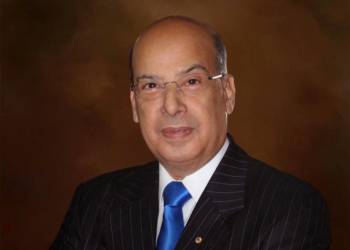By Sir Ronald Sanders
In the face of escalating global environmental challenges, water scarcity and water stress have emerged as critical issues that threaten the livelihoods and well-being of millions of people.
Nowhere are these challenges more acute than in the Caribbean and Latin American regions, where countries grapple with the harsh realities of limited freshwater resources. Among these, Antigua and Barbuda stands as a poignant example of struggle in the face of severe droughts and the pressing need for potable water.
Antigua and Barbuda is a drought-ridden country, surrounded by the Caribbean Sea. The line in Samuel Taylor Coleridge’s poem of the Ancient Mariner, “Water, water, everywhere; nor any drop to drink”, has applied to the country before when it has experienced periods as long as seven years without rainfall to fill reservoirs. That situation could still exist today if it were not for a deliberate policy position by the present government to invest heavily in desalination and reverse osmosis plants, as a priority, to satisfy the need for water by the local population and the tourism industry on which the country’s economy depends.
The Antigua and Barbuda government and its public utilities supplier have spent large sums of money on desalination and Reverse Osmosis plants to convert seawater into a lifeline. Yet, this solution comes at a steep price, making the cost of water in Antigua and Barbuda per head of population amongst the highest in the world. Recently, in order to continue to manufacture water to satisfy the needs of the country, the utilities provider has had to raise water rates. This decision has escalated expenses at a time when disruption of global supply chains, resulting from the aftermath of the COVID-19 pandemic and conflicts, such as the Russian war against Ukraine, has already raised the cost of living.
The gravity of the situation in the Caribbean is underscored by the World Resources Institute, which identifies several Caribbean nations as experiencing “extremely high” levels of water stress. These countries include Dominica, Jamaica, St Vincent and the Grenadines, Trinidad and Tobago, Antigua and Barbuda, Barbados and St Kitts-Nevis, with the latter three also being designated as water scarce.
Latin American countries are not immune. According to the World Bank, over the last two decades, Latin America has experienced 74 droughts, causing more than US$13 billion in damage. The bank says that this phenomenon impacts agricultural and livestock production and farmers’ livelihoods, especially those living in vulnerable conditions. For example, more than 50 percent of 1.9 million small-scale farmers live under these conditions in the Dry Corridor, an ecological region on the Central American Pacific coast affected by drought and food insecurity.
While the World Bank and the Inter-American Development Bank (IDB) have acknowledged the crisis -highlighting the need for investment in non-conventional water sources and advocating for integrated water resources management – their actions fall short. The crux of the issue lies in the misalignment of their concessional financing lending policies with the urgent needs of the most affected countries. This gap between recognition and response leaves nations, like Antigua and Barbuda, to bear the brunt of securing water for their people and economies.
The repercussions of this financing misalignment extend beyond economic strains, touching the very core of societal health and food security. The global water crisis, with over 703 million people lacking access to clean water, is not just a statistic but a daily reality for many in the Caribbean and Latin America. The time spent by women and girls fetching water and the deaths of children from water-related diseases are heart-wrenching reminders of the human cost of inaction.
In the case of Antigua and Barbuda, its policy decision to invest in manufacturing water to fulfil the needs of the population, undoubtedly results in higher costs now. However, it also puts the country in a better position to alleviate the water scarcity and stress problem which will intensify through factors, such as population and tourism growth and the impacts of climate change. The strain now will considerably ease the pressure in the future, contributing to both tourism development and public safety.
This brings us to a pivotal moment where the urgency to act cannot be overstated. While Antigua and Barbuda and similar nations undertake significant financial burdens to address water scarcity, the role of international financial institutions to support these efforts is indispensable. It is imperative that these institutions realign their lending policies to offer low-cost financing for urgent water infrastructure projects, enabling equitable access to water for all.
With the global investment need in the water sector surpassing $1.37 trillion and a sixfold increase required to meet UN Sustainable Development Goals by 2030, the time for real action on water issues is overdue. The cost of inaction will be measured in human suffering and lost opportunities for sustainable development.
Critical to this is a change in policy by the boards of directors of the World Bank and the IDB. That change must come from the major governments that control the policies of these institutions. They must ensure that lending policies match real development needs and provide financing on terms that will allow vulnerable countries to purchase the desalination and reverse osmosis plants they require, through affordable repayment schemes.
Today, with 2.2 billion people globally lacking safely managed drinking water, 3.5 billion lacking access to safely managed sanitation, and two billion lacking access to basic hand hygiene facilities, the importance of urgent and aligned action is great.
The time for action on addressing the real water issue, rather than talking about it, has long past.





